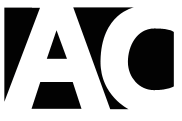
When I first work with a client, their content strategy is in one of two places – it’s either non-existent with the core of marketing efforts focused on offline tactics and old school sales methods, or it’s focused on quantity over quality.
For those that fall into the latter camp, the issue is often one of planning. Content marketing is all about writing quality content that attracts attention from key prospects, right? But when someone doesn’t know what type of content will successfully make that connection, they compensate by writing more.
I am equally guilty of this. Read my blog from 5-6 years ago or the blog posts on my former agency’s website and you’ll see a whole lot of content and not a lot of focus on solving problems of our readers.
That’s why, when creating an article designed to stand as a pillar of your content strategy – a true authority piece – it needs to hit on a number of specific things. Here are 5 elements such an article needs and how to ensure your next article has each.
1. A Specific Problem It Resolves
At the core of every article you write should be a specific pain point or problem faced by your readers.
This requires in-depth research and a keen understanding of who your target audience is and what they are trying to accomplish. When done properly, it benefits you in multiple ways.
First, your readers are instantly inclined to trust you because you understand their predicament. Second, they are willing to follow your call to action because you have already helped them. Finally, the type of content that solves problems does extremely well in search engines.
2. 1-3 Actionable Points Per 500 Words
Good content drives people to take action. Don’t just talk about the problem, address its root cause and provide potential solutions as part of the discussion.
When people walk away from a piece of content with clearly actionable pieces of advice, even if they don’t take those actions, they will be more likely to come back. They trust you because you’ve given them real value.
And the odds of them solving that problem increase simply by reading your article.
3. A Universal Approach to Engagement
Everyone reads, learns, and absorbs information in a different way. Written content is effective, but so too are videos, image-based articles, infographics, and even audio clips.
The best way to maximise engagement with your readers and to ensure they walk away with the information they need is to present content in a diverse, multimedia format. Reuse your content in other ways also. Produce SlideShare presentations, turn those into YouTube videos, and consider starting a podcast to cover similar topics.
4. References and Links to Related Content
Back up your statements with reference links that show you’ve done your research while providing a nice background for those who want to dig deeper.
Research builds trust and creates a connection with readers who know the sources you cite. You can also use this to your advantage to link to other articles you have published on your own platforms.
5. A Clear Call to Action at the End
Finally, capitalise on the new trust you’ve developed with your readers by including a final call to action.
Based on the advice given and the problem addressed, provide something additional that goes above and beyond your article or blog post. It can be an eBook, a checklist, a document that goes through details of the process, or even just a downloadable version of the article they just read.
People are much more willing to say yes to your request when you’ve already provided them with something of great value.
If your content does all five of these things and is a well written article or blog post, it will serve its purpose of engaging with your readers, building a true relationship with them, and positioning you as a trusted expert.
Interested in getting more out of your authority articles without spending more time writing them? Download my blog creation checklist to jump start your efforts:






